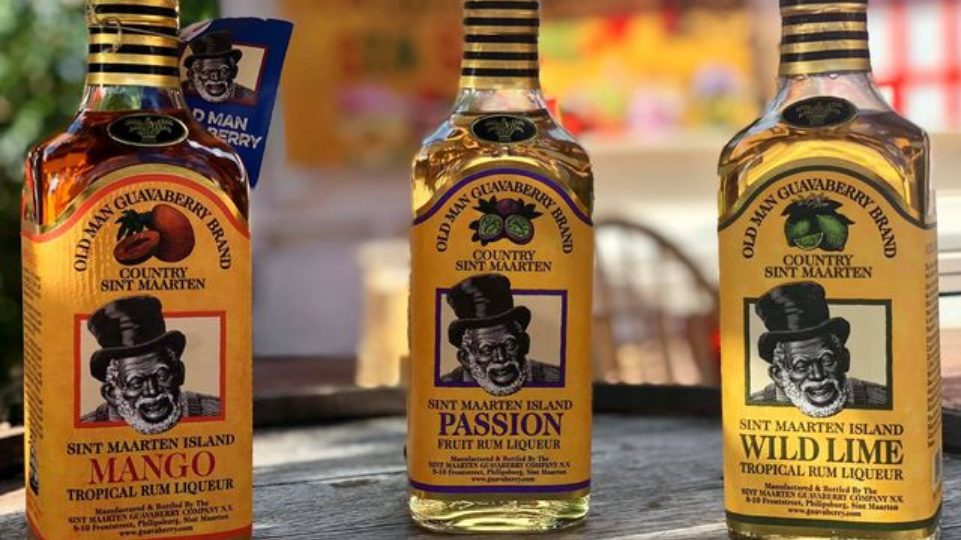The guava berry is a fruit that thrives in the Virgin Islands and other parts of the Caribbean. The round, red, tiny fruit has a sweet-tart flavor and makes syrups, jams, ice cream, and liqueurs.
Table of Contents
What is a Guavaberry?
The guava berry fruit (Myrciaria floribunda), often called “rumberry,” is a member of the Myrtle family and is indigenous to the Caribbean. It is a tiny fruit tree that can reach a height of 10 meters and bears spherical, yellow-green berries about half a cherry guava. The fruit’s tough, woody exterior protects a soft, juicy interior.
Guavaberries have a distinct and challenging flavor profile. It’s often described as having a blend of sweet, tangy, and spicy flavors with undertones of clove and nutmeg. The aroma is likewise complex and frequently characterized as floral and fruity.
Visually, the fruit is tiny and rounded, with a yellow-green skin that becomes reddish-purple when mature. The seed is tiny and brown, while the pulp is pale golden. Guavaberry trees have glossy, dark green leaves and bloom with small white flowers during spring.
The History of Guavaberries
The guavaberry fruit is indigenous to the Caribbean islands, particularly St. Eustatius and St. Martin. The fruit is closely related to Camu Camu. The fruit grows wild in Brazil, South America, Cuba, Dominican Republic, and Puerto Rico. It was later introduced to Hawaii, Florida, the Philippines, and Bermuda.
The fruit is a significant commodity in international trade and is exported to various countries, such as Europe and North America. Apart from the fruit, its other products, such as syrups, jellies, and jams, are also exported.
The fruit is significant in traditional Caribbean folklore and connected to the Christmas holidays. Guavaberries are frequently utilized in Christmas drinks like guavaberry liqueur made from rum. The liquor is a favorite in Sint Maarten and the Virgin Islands.
The fruit has numerous health benefits and is used for liver treatment in Cuba.
What Does a Guavaberry Taste Like?
A guavaberry has a sweet, tangy, and slightly sour flavor. It has an astringent taste and a hard texture when raw. However, it gets softer and sweeter when cooked.
How to Tell When Guavaberries Are Ripe
The tips below will help you point out the ripe berry fruit.
| Firmness | Fully ripe berries feel slightly soft but not mushy. |
| Scent | A powerful, sweet aroma that is difficult to ignore emanates from ripe berries. If it has no smell, then the fruit may not be mature. |
| Taste | The flavor of ripe berries is sweet and somewhat tangy. |
| Color | Deep red, maroon, and purple are the colors of ripe berries. Green or yellow-orange is an indication that the fruit is not fully mature. |
When choosing guavaberries, select fruits that are firm, brightly colored, and blemishes-free. Avoid squishy, bruised, or dull fruits.
Are Guavaberries and Guava Related?
Guavas and guavaberries are different fruits that are not closely related. The two are primarily comparable in their sweet flavor but differ in appearance and texture.
Guavaberries are small, round, and have rough, red skin, whereas guavas are larger and have smooth, green, or yellow skin. Guavas are frequently consumed raw, while guavaberries are typically used to create jams, jellies, and alcoholic drinks.
Cooking with Guavaberries
You must adequately wash and remove any stems or leaves from the fruit before using it in any recipe. The following are instructions for preparing guavaberries:
- Rinse the berries to get rid of any dirt.
- Remove the stem and any lingering leaves.
- Remove the seeds from the fruit by halving it.
Once the berries are ready, you may begin preparing meals with them. Guavaberries are common in various regional cuisines worldwide, such as in Southeast Asia, the Caribbean, and Latin America.

Here are four delectable recipes that utilize guavaberries:
Guava BBQ Sauce: This sweet and tangy BBQ sauce is perfect for grilled chicken, pork, or beef.
Guava Pasteles: These traditional Puerto Rican pastries are made with masa dough and filled with guava paste, cream cheese, and sugar. They’re then wrapped in banana leaves and steamed until tender.
Guava Sorbet: This refreshing dessert is made with fresh guava puree, sugar, and water. It’s easy to make and perfect for a hot summer day.
Guava Chutney: This spicy and sweet condiment is a popular accompaniment to curries, grilled meats, and sandwiches in Indian cuisine.
How to Store Guavaberries
Guavaberries can be stored using different techniques, each with a variable shelf life. The fruit can last for 2-3 days when stored on the counter at room temperature, but consuming them as soon as possible is recommended to ensure their freshness.
The berries can be refrigerated in an airtight container for up to one week for prolonged preservation. On the other hand, frozen berries can last 12 months, while dried berries can have a shelf life of almost six months when stored in a cool and dry place.
Nutritional Benefits of Guavaberries
The guavaberry fruit is rich in vital nutrients. A 100-gram serving of guavaberry fruit has 2.6 grams of protein, 0.9 grams of fat, 8.9 grams of fiber, and roughly 68 calories.
It is an excellent source of vitamins A, C, and B-complex, like pyridoxine, niacin, and pantothenic acid. Minerals, including manganese, magnesium, and potassium, are also abundant.
Vitamin C helps strengthen the immune system, speed up wound healing, and lower the chance of developing chronic illnesses like cancer and heart disease. The presence of fiber helps promote healthy digestion, avoid constipation, and reduce the risk of colon cancer.
The potassium concentration can lower the chance of getting a stroke and assist control of blood pressure. The present antioxidants help the body in fighting oxidative stress and lessen inflammation.
Where to Purchase Guavaberries
The guavaberry fruit can be found in some specialty stores that sell foods from the Caribbean or Latin America, but it is rare in most grocery stores and supermarkets. It could also be accessible in farmers’ markets in tropical areas when the fruit is in season.

